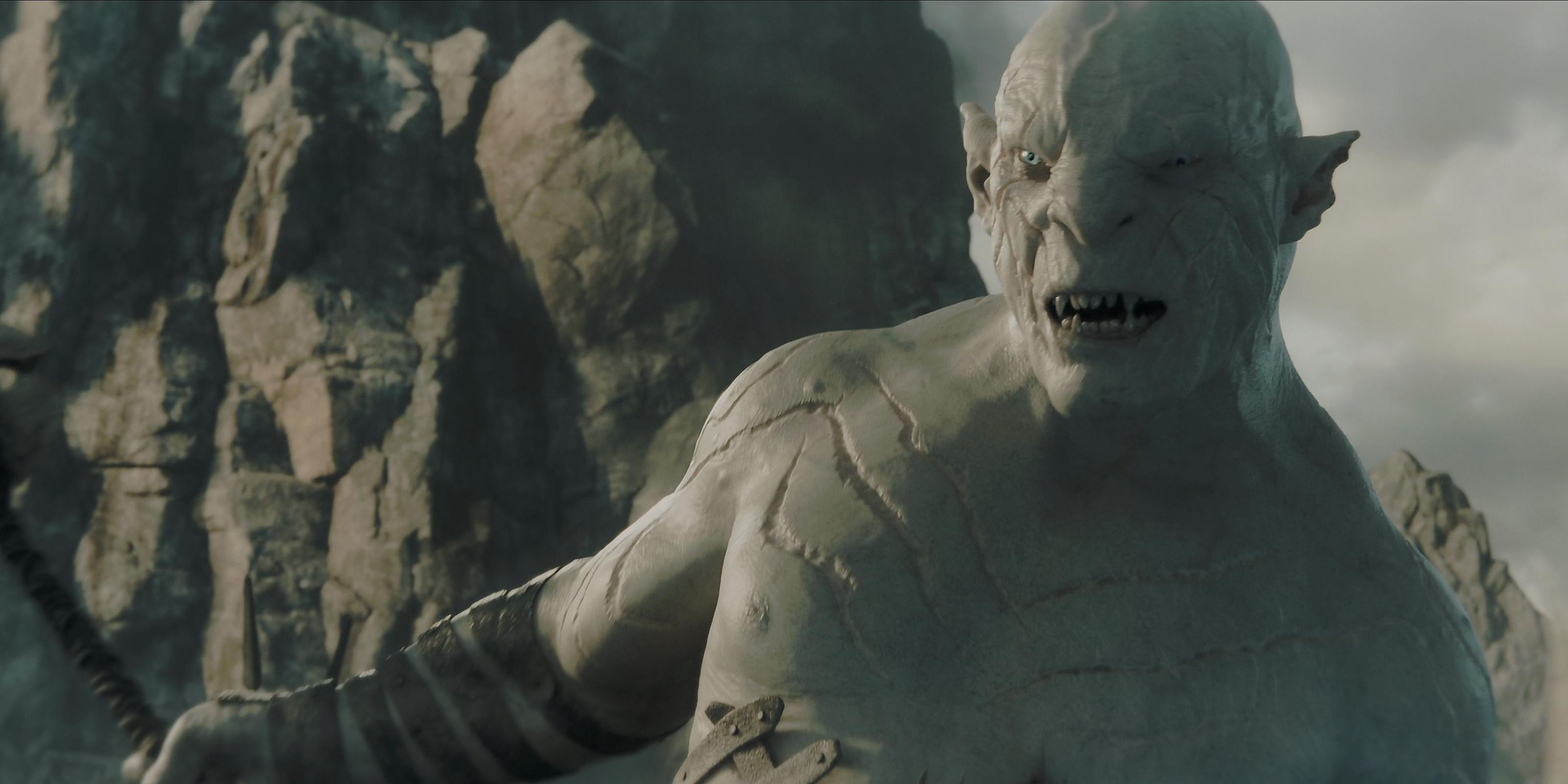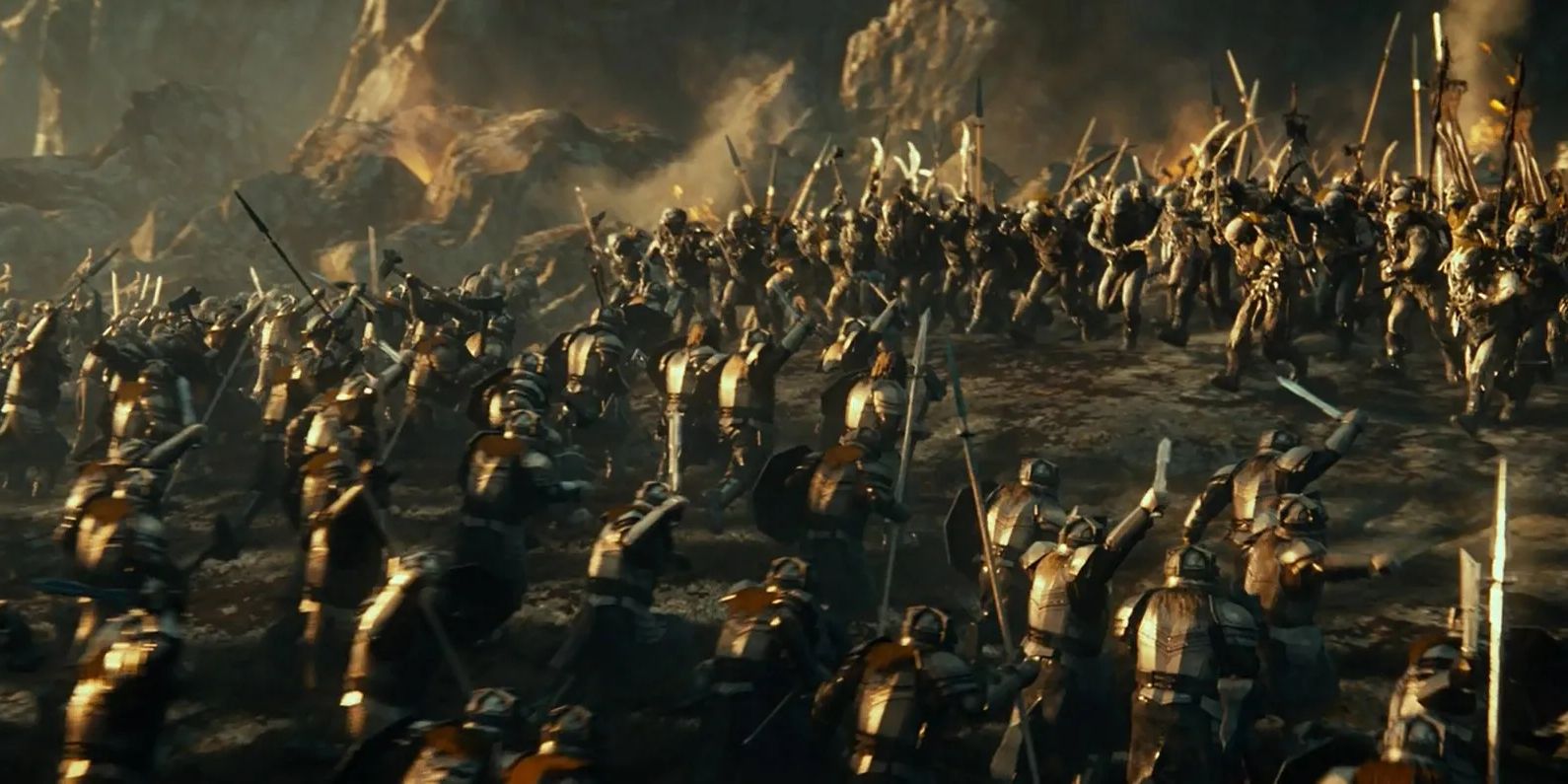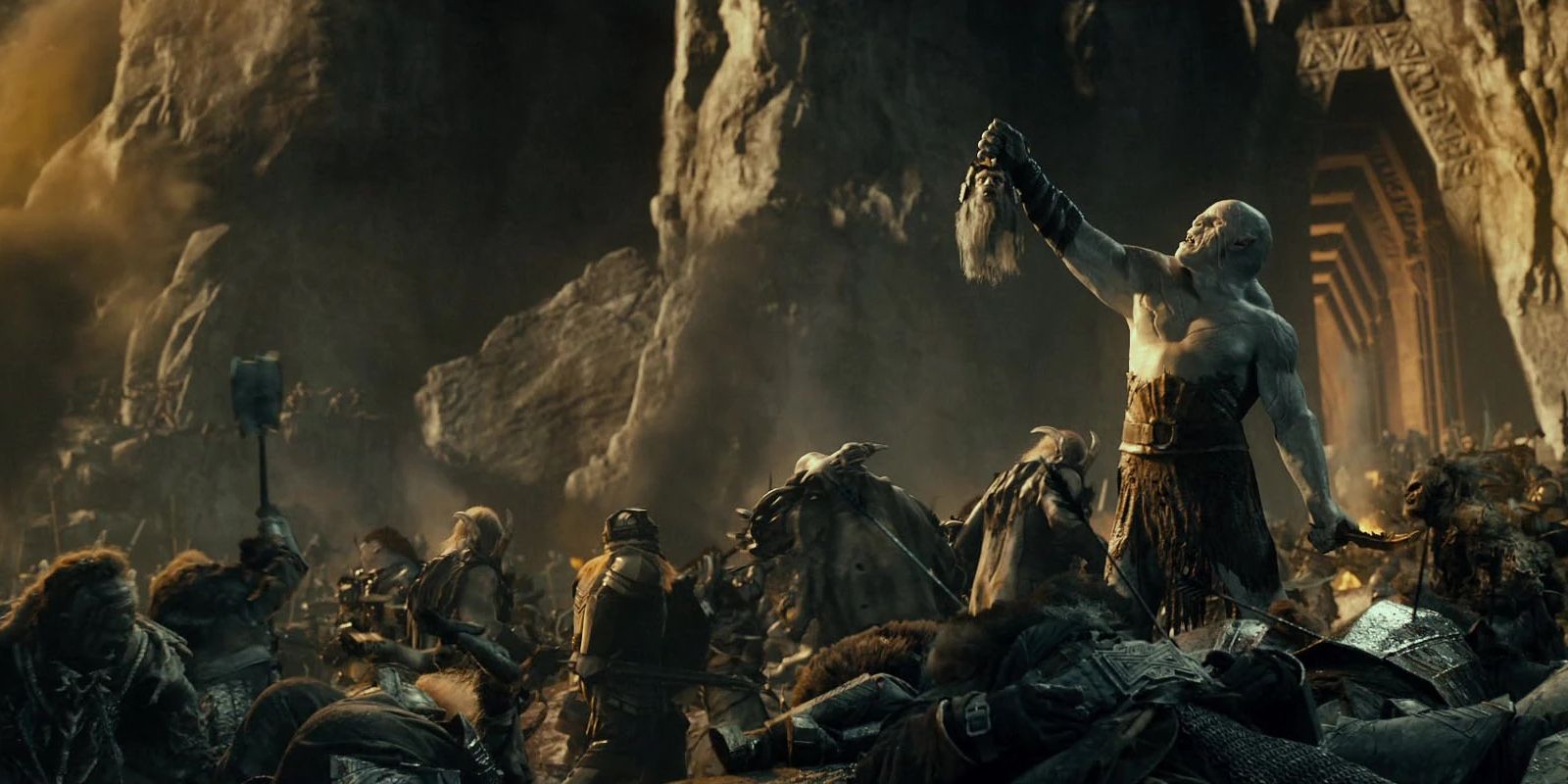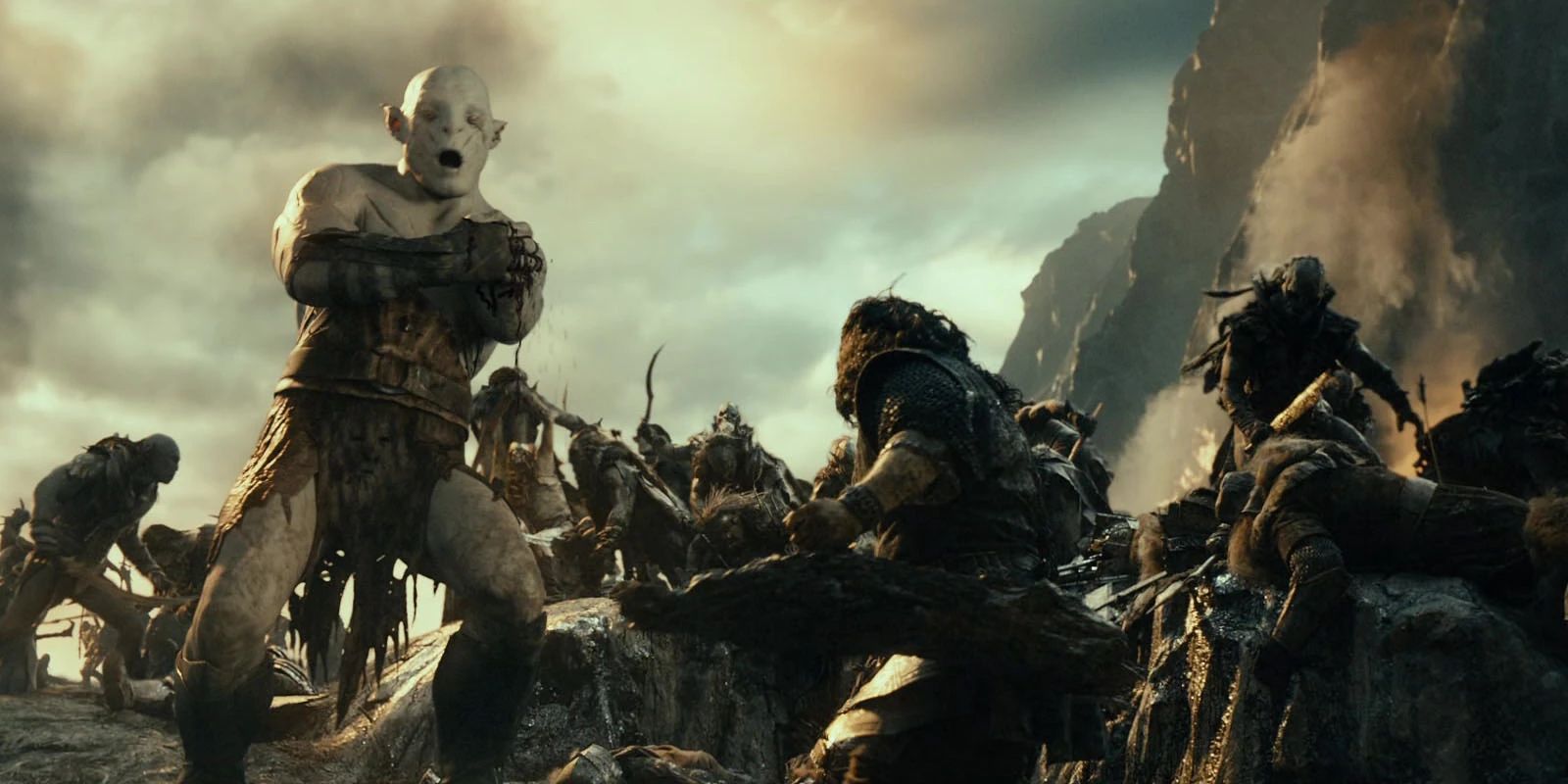
Unraveling the Epic Battle of Azanulbizar in The Hobbit

The Battle of Azanulbizar was a pivotal conflict in the War of the Dwarves and the Orcs, resulting in the defeat of the Orcs and their leader, Azog The battle was a culmination of years of revenge-seeking by the Dwarves, and its outcome ultimately paved the way for the events of The Lord of the Rings
In the Third Age, on December 1st, 2799, the War of the Dwarves and the Orcs culminated in the Battle of Azanulbizar. After twenty years of living in exile from the Lonely Mountain, King Thrór and his companion Nár ventured to the lost realm of Khazad-dûm, where Azog, an Orc-chieftain of Moria, killed Thrór and marked his forehead with his name. Azog then warned Nár that no Dwarf beggars should enter his territory, throwing a bag of coins at him. Upon learning of his father's death, Thráin II declared war on the Orcs, which lasted nine years. The Battle of Azanulbizar, fought in the valley under the East-gate of Moria, finally brought the war to an end, resulting in the destruction of the Orcs of the Misty Mountains. The consequences of this battle differ in the books and movie adaptations of The Hobbit.
Who Fought in the Battle of Azanulbizar?
During the Battle of Azanulbizar, the Dwarves faced overwhelming odds against the Orcs of Gundabad who had gathered in Moria. Despite managing to attack all other enemy strongholds, they suffered heavy losses and were greatly outnumbered. Among the casualties were Frerin, the second son of Thráin, and Fundin, the kinsman of Frerin and father of Dwalin and Balin, who were part of Thorin's company later on. Thráin and Thorin were also badly wounded, with Thorin resorting to cutting off a branch from an oak tree to defend himself after his shield broke, earning him the nickname 'Oakenshield'.
Who Won the Battle of Azanulbizar?
Despite being outnumbered at first, the Dwarves were well-prepared for battle and eventually gained more reinforcements, led by Thráin's cousin Náin, the son of Grór, who was the Lord of the Iron Hills. Náin bravely faced Azog at the gate, but unfortunately met his demise when the Orc broke his neck.
After Náin's death, the Orcs were either killed or fleeing towards the south, leaving Azog alone. As he turned back towards the gate, he realized that his guard had also been slain. It was then that Dáin Ironfoot, Náin's son, beheaded Azog on the steps of Moria. To truly mark his victory, Azog's head was impaled on a pike with the bag he had thrown at Nár stuffed in his mouth.
After the Battle of Azanulbizar, the Dwarves emerged victorious despite their significant losses. The Orcs, on the other hand, suffered even greater casualties with an estimated ten thousand deaths. The Dwarves were left with the difficult task of burning the bodies of their fallen soldiers as there were not enough survivors to bury them all. Following the battle, the various Houses of the Dwarves retreated to their respective homes in the North, East, and West. Meanwhile, Thráin and the Longbeards chose to settle down in the Southern Blue Mountains.
How Did the Movies Change the Battle of Azanulbizar From the Books?
The Battle of Azanulbizar is portrayed differently in the film trilogy, specifically in The Hobbit: An Unexpected Journey and the extended edition of The Hobbit: The Desolation of Smaug. In these adaptations, it is referred to as the Battle of Moria and depicted as a separate battle rather than the conclusion of a nearly decade-long war. The story is told as a flashback, with Balin recounting Thorin's past to Bilbo Baggins. According to the films, after Smaug forced Thrór and his people into exile, the King attempted to reclaim an ancient kingdom in Moria. However, he discovered that the Gundabad Orcs, led by the vicious Azog, had already taken control. Prior to the battle, Thrór gave his Ring of Power to Thráin in case he was killed, allowing his son to become King. Thrór fought alongside the armies of the Lonely Mountain and the Iron Hills, but ultimately fell to Azog's blade. This differs from the original lore, where the King had been killed nine years prior to the battle.
Thráin's attempt to stop Thorin from attacking Azog failed, and he instead charged after the Orc himself. Sadly, he never returned, and it was later revealed that Azog had taken the ring from him by slicing off his finger. Gandalf later found a delirious Thráin at Dol Guldur, where he was eventually consumed by the shadow of the Necromancer. In retaliation, Thorin managed to cut off Azog's left arm with his own sword, but the Orc was thought to have died as a result. However, it was later discovered that Azog had survived and sought revenge on Thorin, leading to their final confrontation during the Battle of the Five Armies. Despite the absence of any mention of Dáin's role, Thorin and his forces emerged victorious in the Battle of Azanulbizar.










